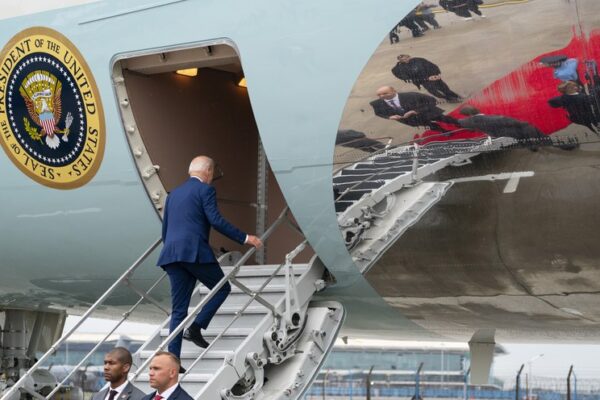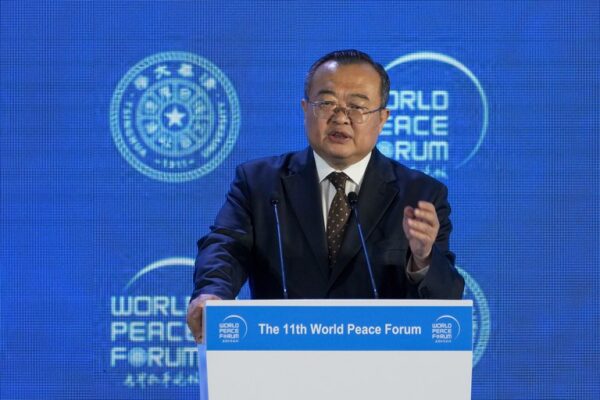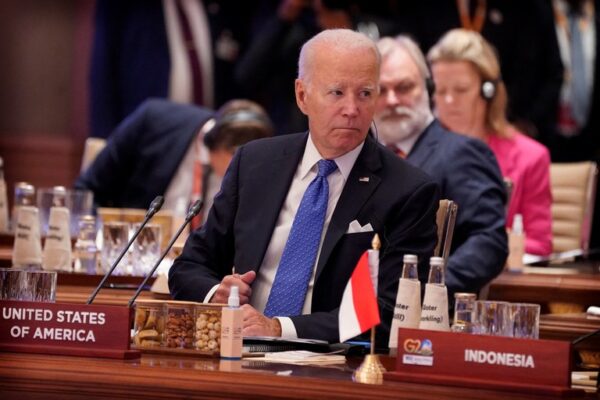Industrial-scale maize cultivation to produce animal feed, one of the two main reasons behind annual smog in the three Lower Mekong countries, has grown on a massive scale, satellite data analysis has revealed. More than 11.8 million rai (1.88 million hectares) of forested area in the northern regions of Thailand, Myanmar and Lao PDR has been converted since 2015 to make way for maize cultivation, Greenpeace Southeast Asia said in its latest report, released on Sept. 6. The report analyzes land-use changes in the Shan state of Myanmar, eight northern provinces of Thailand, and seven Lao provinces in the Lower Mekong region that are facing transboundary haze problems in recent years, mainly due to wildfires and widespread agricultural burning. Between 2021 and mid-2023 alone, more than one million rai of the region’s forest was lost to maize farming, Tara Buakamsri, the country director for Greenpeace Thailand, told Radio Free Asia on Friday. That is equivalent to more than 220,000 soccer fields, or more than twice the size of New York city. Northern Lao PDR saw the most forest encroachment, with about 5.7 million rai converted to maize farms since 2015. In Myanmar’s Shan state, 3.1 million rai of forest was destroyed, while northern Thailand saw 2.9 million rai turned into corn cultivation. “Mass maize farming is moving from northern Thailand to Myanmar and Laos, where it’s harder for us to monitor and engage with local communities due to the political situation,” Tara said. In total, maize farming increased more than 38% from 13 million rai to 18 million rai – almost the size of Belgium – between 2015 and 2023, according to Greenpeace. The report also showed that the hot spots – areas with fires according to satellite data – in maize farming areas during the cultivation season grew from 31% in 2020 to 41% this year. Another 42% of this year’s hot spot was attributable to forest fires. The rest was rice paddy and other crop plantation-related hot spots. “Our study shows that the maize industry continues to play a key role in destroying forests in the Mekong subregion,” Tara said. “It is also primarily responsible for the toxic air pollution that has become an annual affair… It shouldn’t have been a ‘haze season’ every start of the year.” Culprits of worsening air pollution Myanmar, Laos, and Thailand are among the top 30 countries with the worst air pollution, according to a study released on Aug. 29 by the Energy Policy Institute at the University of Chicago (EPIC). The fine particles PM2.5 count for Southeast Asia’s most polluted country, Myanmar, was almost 35 micrograms per cubic meter (μg/m3), seven times worse than the World Health Organization’s air quality guideline, according to EPIC’s Air Quality Life Index. In Lao PDR, the PM2.5 was around 27 μg/m3, while in Thailand, it was around 23 μg/m3. Earlier this year, many areas in northern Thailand, Myanmar and Laos remained blanketed in toxic haze for weeks due to out-of-control wildfires and agricultural burning, with more than two million people hospitalized with respiratory issues in Thailand alone. Experts say the deteriorating air pollution during the region’s crop cultivation season started after Thailand imposed zero tariffs for maize imported from Laos, Myanmar, and Cambodia to support the cross-border contract farming program about two decades ago. Thailand is now among the world’s largest animal feed producers, and one of the largest for pork and poultry too. Maize is the primary ingredient, making up over a third of the animal feed. A smoggy view of Mai Sai city in Chiang Rai province, northern Thailand, April 5, 2023. Credit: Subel Rai Bhandari for RFA Despite the smog, many maize farmers in the region continue to burn the remains because it is the easiest way to get rid of the stubble to prepare for subsequent cultivation. However, smallholder farmers should not be solely blamed since they do not have an alternative, experts have told RFA. “We observe heavily indebted and disempowered farmers with weak land tenure, severe soil erosion, constantly engaged in land conflicts with the state, virtually forced to encroach upon forests, and blamed by society for widespread air pollution at a regional level,” said one research paper published this month in the Resources, Environment and Sustainability journal. “The corporate players are the winners in this system, whereas farmers and the environment are losers.” RFA Burmese made several calls to contact Myanmar military officials but did not get a response. Shan state’s junta-appointed government spokesperson, Khun Thein Maung, told RFA that local government officials from Myanmar and Thailand are discussing the issue. “In fact, there was no burning on our side. There is no proof,” he said, adding that corn plantation areas have expanded by a few acres but “not doubled or tripled” to meet demand for local animal feed and foreign export. “Residents are benefitting from it. Farmers make money from the business. It supports the socio-economic life in the region,” he said, adding that no big agro-industry is involved. A Shan state-based environmental activist, who asked not to be named, fearing retribution, told RFA that maize cultivation increased during the previous NLD government. “49% of corn cultivation in Myanmar is in Shan state, contributing to 55% of the total production. But little has been done to educate local farmers about shifting cultivation and burning of stubble [which often] causes forest fires,” he said. In Laos, the “government has taken strict measures to reduce slash-and-burn cultivation,” an official from the agriculture and forestry department of Oudomxay Province told RFA. “The provincial authorities in northern Laos have issued notices telling farmers to stop burning forest and to prevent the forest fire and prevent it from spreading.” This combination of pictures created on May 1, 2023 shows buildings amid high levels of air pollution on Feb. 2, 2023 (top) and the same view amid moderate levels of air pollution (below) on May 1, 2023 in Bangkok. Credit: AFP. The Thai government did not respond to RFA requests for comment,…







